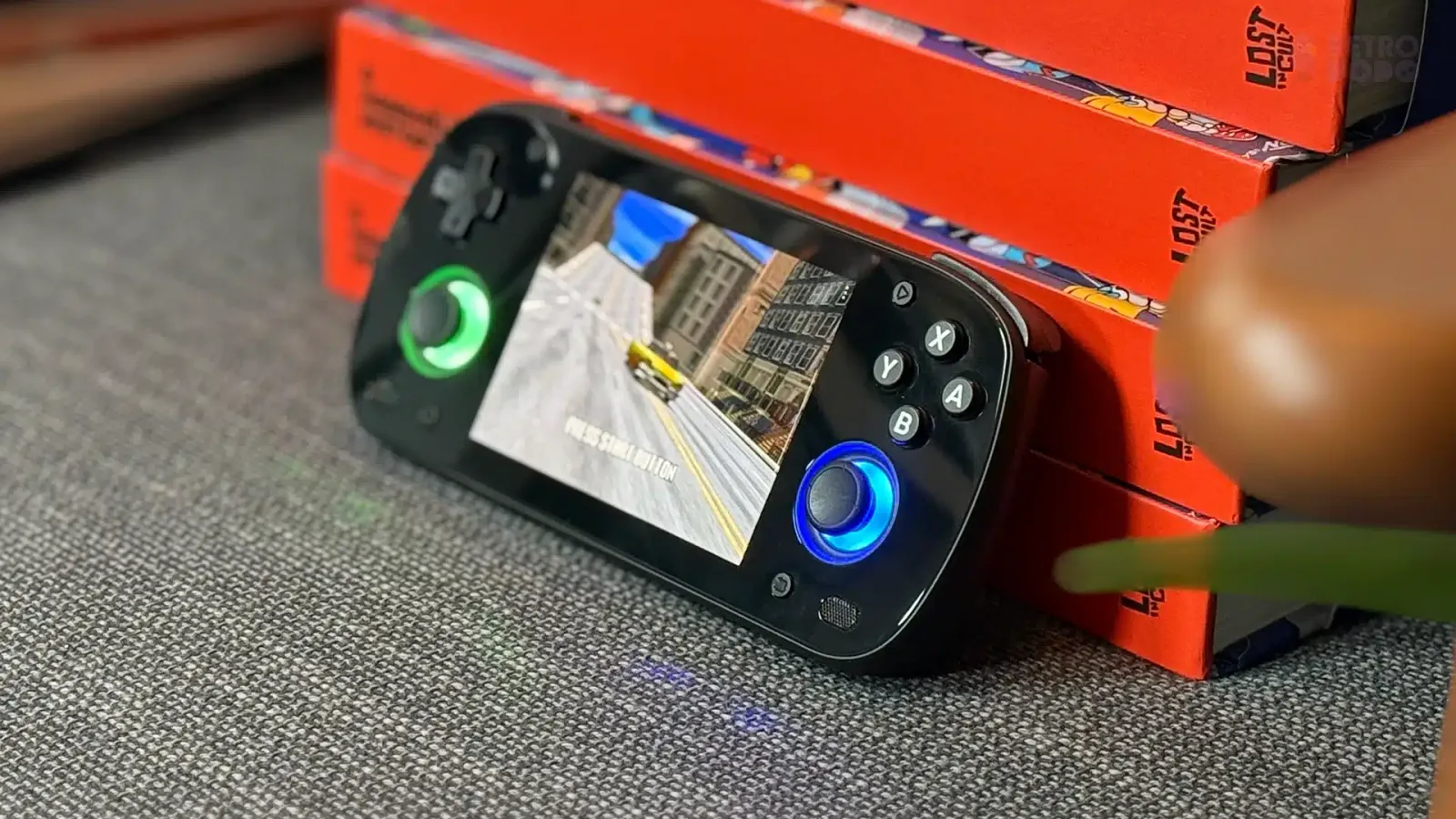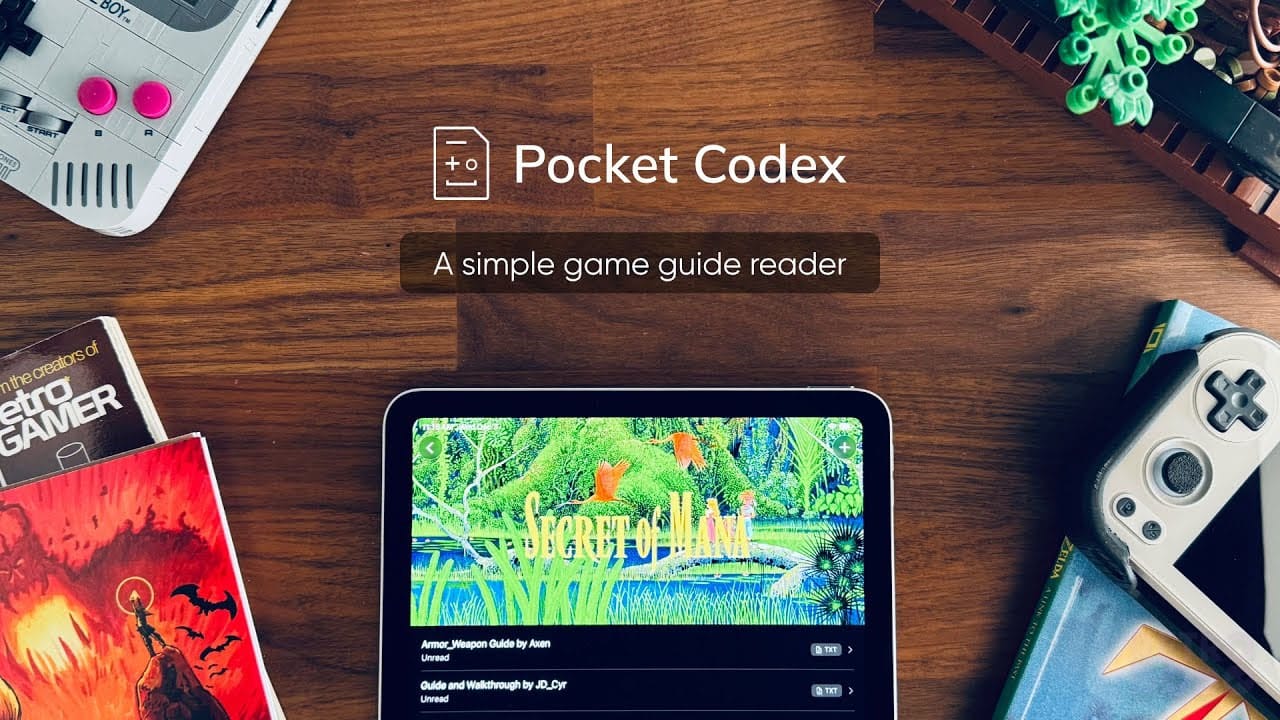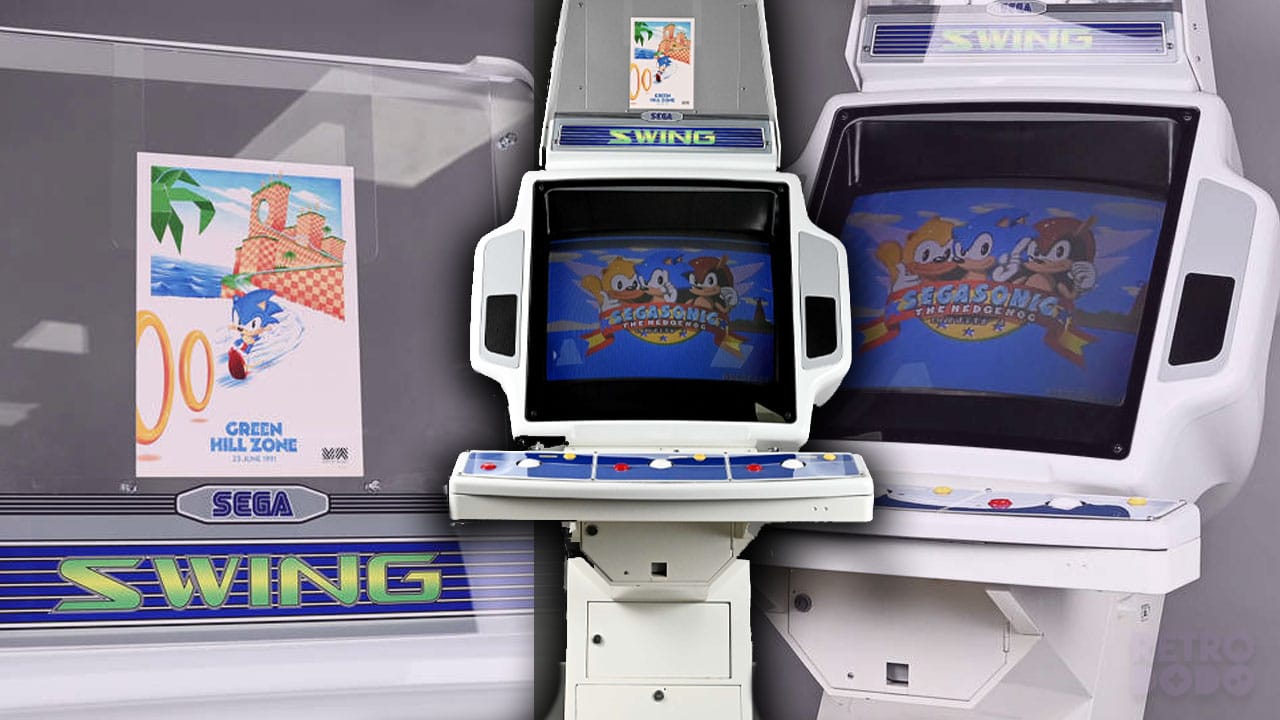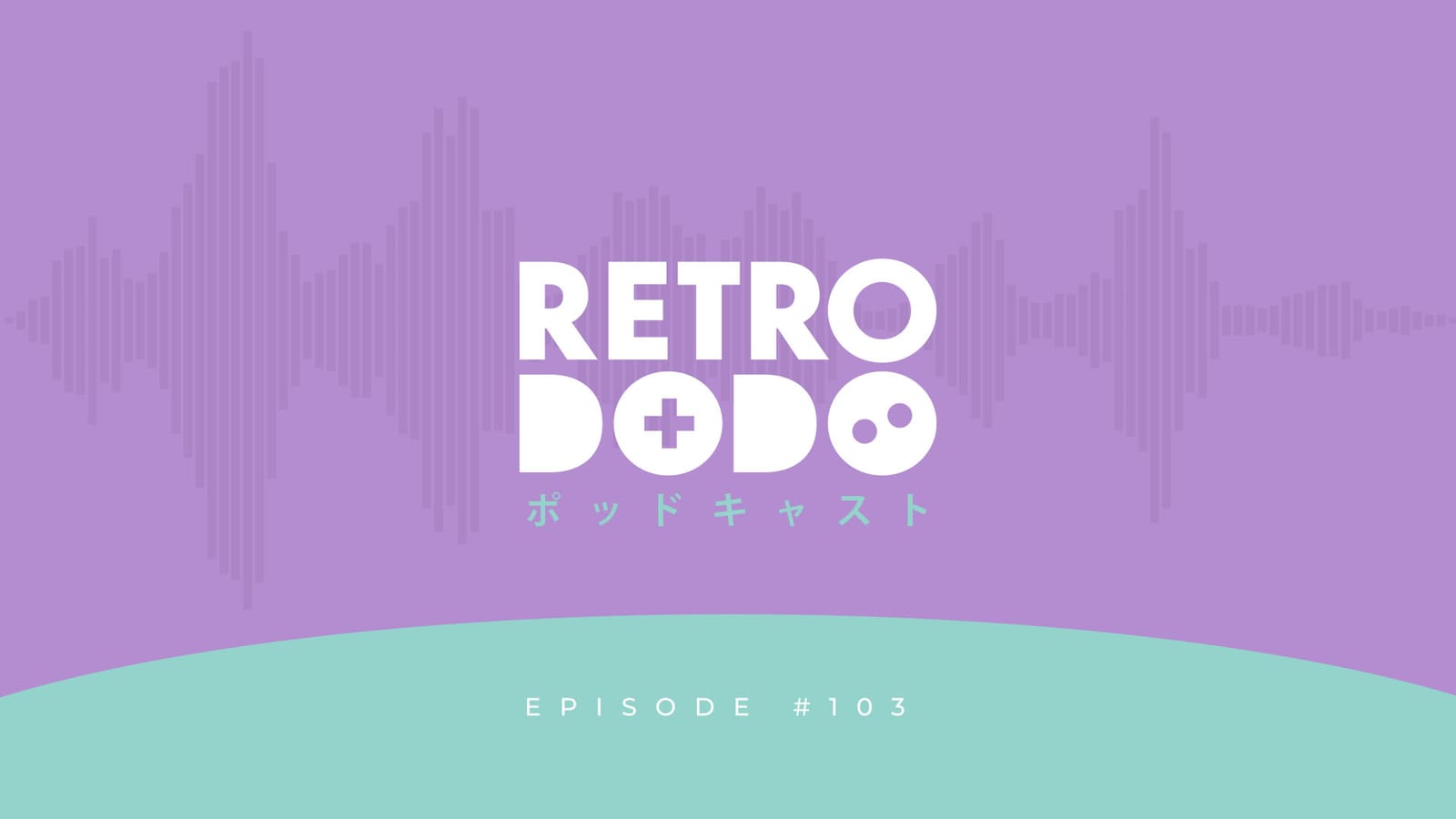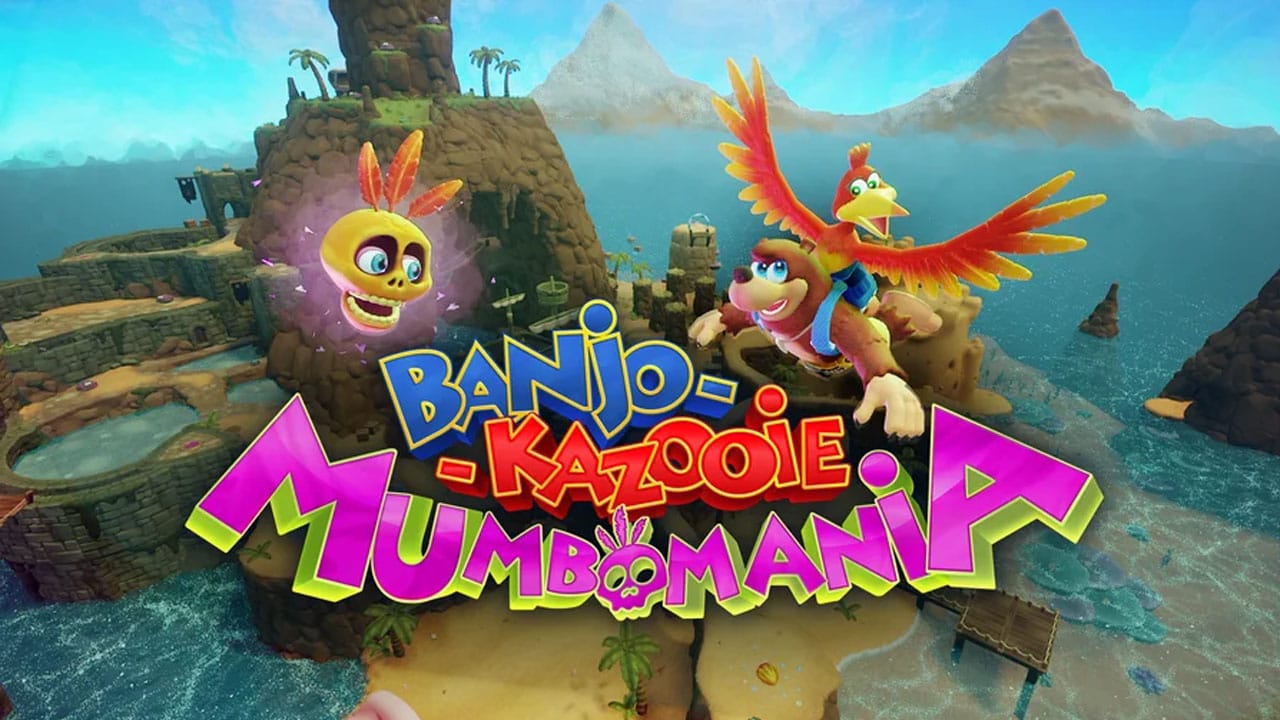The Retroid Pocket Mini has been on my radar ever since it was announced back in late August, and we all knew GoRetroid were working on something special because they haven’t teased a device for almost an entire year, but finally their latest product is on my desk.
It was teased shortly before the Retroid Pocket 5, another retro handheld from GoRetroid that targets those that want a larger screen and a extra bit of RAM, which puts this “Mini” device in an awkward position, because after a week of testing this product the only major issue that I have come across is the fact the screen is too small for the larger consoles that this chip can quite easily emulate.
It’s a similar issue I had with the AYANEO Pocket Micro, and I worry that this is becoming a trend recently where manufacturers try and pack as much power into a “pocket friendly” device because they believe that’s what the market wants, and to an extent, yes we want power, but not at the expense of a $200 device with a small 3.7″ screen, because it’s awkward to emulate games that were designed for larger screens.
Now I know that’s a little weird to read in a review… “this guy says it has too much power?”. Yes, because the power comes at a price and I whole heartedly believe that retro handhelds with a 3″ – 3.9″ screens work best with emulation up to Playstation 1 and maybe Dreamcast games. Gamecube, PSP, Nintendo Wii and Playstation 2 require larger screens for it to become a comfortable portable gaming experience in my honest opinion.
And, with the Retroid Pocket 5 just around the corner (which features similar specs but a much larger 5.5″ screen), it makes me wonder if its worth waiting for that device instead, especially when it’s only $20 more than the Pocket Mini? Cementing my reasoning that this is placed awkwardly, and it feels like they’ve created their own competition.
But, that said, this is a phenomenal device, and if you’re on the market for an extremely powerful, well built 3.7″ retro handheld that can fit in your pocket, then this is certainly one of the best on the market and adds to the ever expanding list of superb Android gaming handhelds.
A remarkable pocket-friendly retro handheld, packed with lots of power and features very obvious welcomed physical upgrades, but they’ve over-powered a 3.7″ device which pushes it into a premium market with a premium price tag, that lacks fluid PS2 emulation. GoRetroid are also releasing a bigger, slightly better speced device in a few weeks for just $20 more, placing it awkwardly on the market and shooting themselves in the foot ever so slightly.
Retroid Pocket Mini Specifications
- 3.7″ AMOLED Touch Display (1280×960 @60FPS)
- Snapdragon 865 CPU
- Adreno 650 GPU
- 6GB RAM
- 128GB Storage
- Android 10
- 4000MAH Battery
- Analogue L2/R2
- Hall-effect Joysticks
- WiFi 6 & BT 5.1
- USB-C Charging
- 3.5MM Headphone Jack
Setup & User Experience
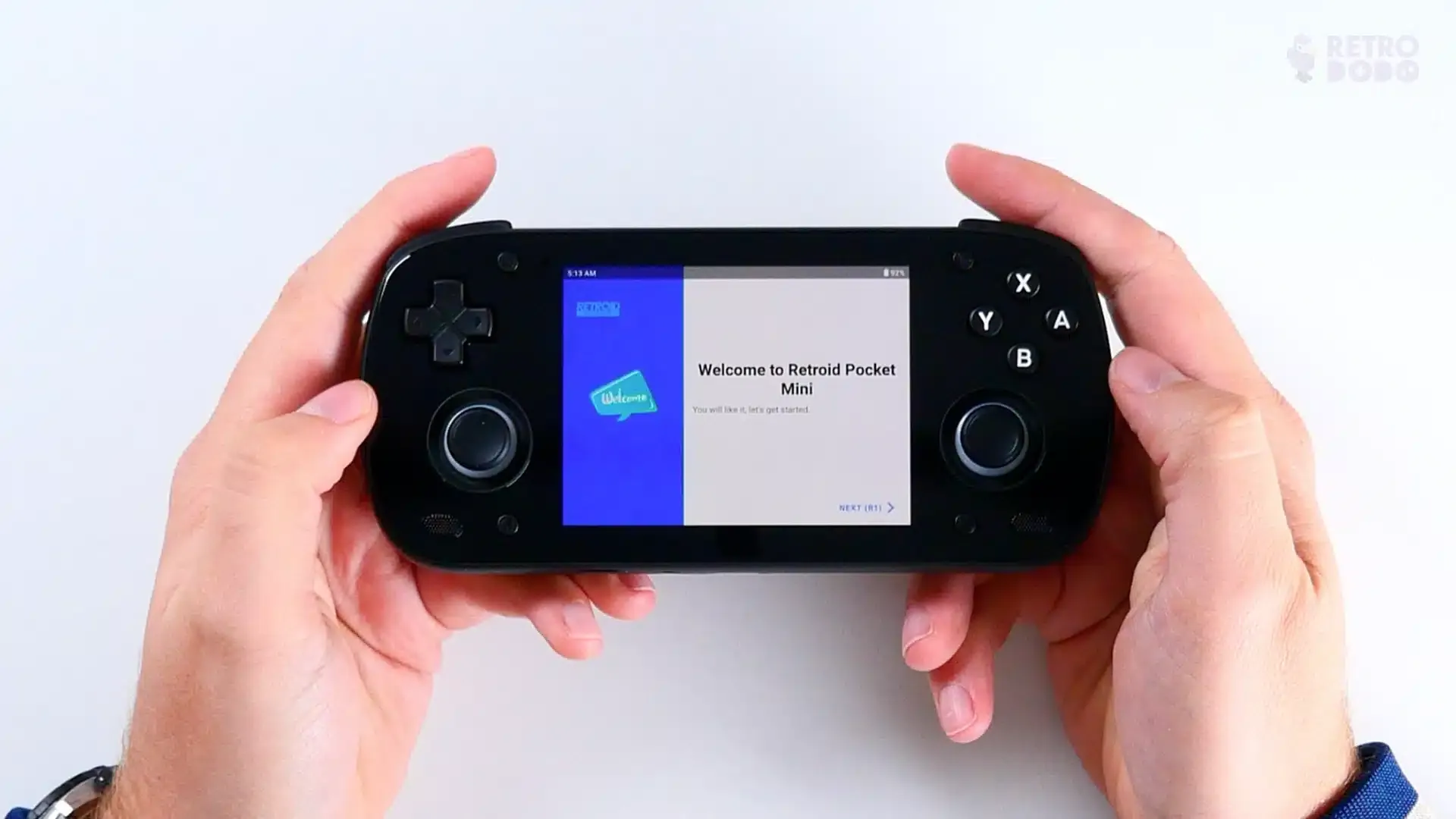
For those new to Android retro handhelds you’ll be glad to know that this device holds your hand the entire way, with an incredibly easy to understand, custom setup process that will have you setup and ready to game in just a few minutes.
It’s something GoRetroid has done well for years now, and it’s a great experience that allows customers to setup their device with pre-loaded emulators ready to go straight out of the box, all you need is a SD card with your legally sourced ROMs and your Google PlayStore login details. It will also ask you if you want to open the device up with Retroid’s own super sleek, Nintendo Switch-like front end, or use the traditional Android front end when you turn on the device.
I advise the GoRetroid Launcher as it turns the device into a super minimal library of retro games, and with the press of a buttons you can jump into Android to use your apps and games as normal.
Overall I have no issues with Retroid’s front-end or their setup process, I believe other manufacturers should follow suit as it’s simple, to the point and easy on the eyes.
Build Quality & Design
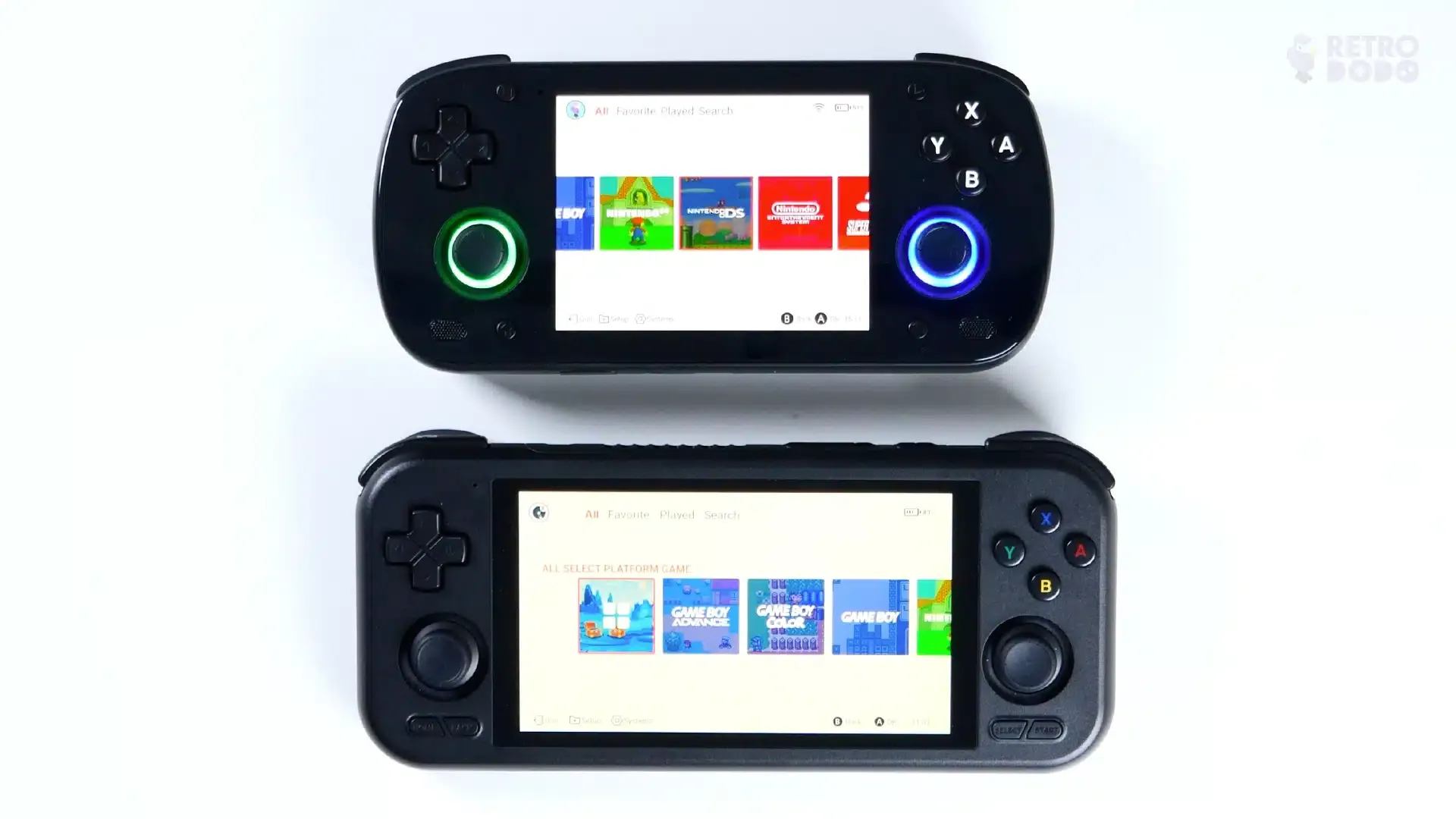
The Pocket Mini has got a whole new look when you compare it the Retroid Pocket 2S. It’s much more modern, features a sleek glass panel along the front just like AYANEO (which started this trend) and some much needed ergonomics on the back panel.
Although the front looks a little more generic, it’s certainly received some much need upgrades. For example, you will no longer see a screen bezel and it features an AMOLED touch display that looks beyond beautiful in all types of light thanks to 500nits of brightness. It’s an obvious upgrade when compared to older devices, and packs a 1280 x 960 resolution at 60FPS, which makes upscaling those older consoles look pretty darn good.
The DPAD is pretty much the same, with some different arrows on the face. It’s a great DPAD, requires very little force and has some very obvious clicky responses, I am happy they kept this D-PAD it’s great. Below that there’s the new, and on-trend backlight hall-joysticks. I have had bad experience with backlight LED joysticks, mainly from the RG40XXH and RG40XXV, but thankfull GoRetroid has used different joysticks here and have much better travel to them.
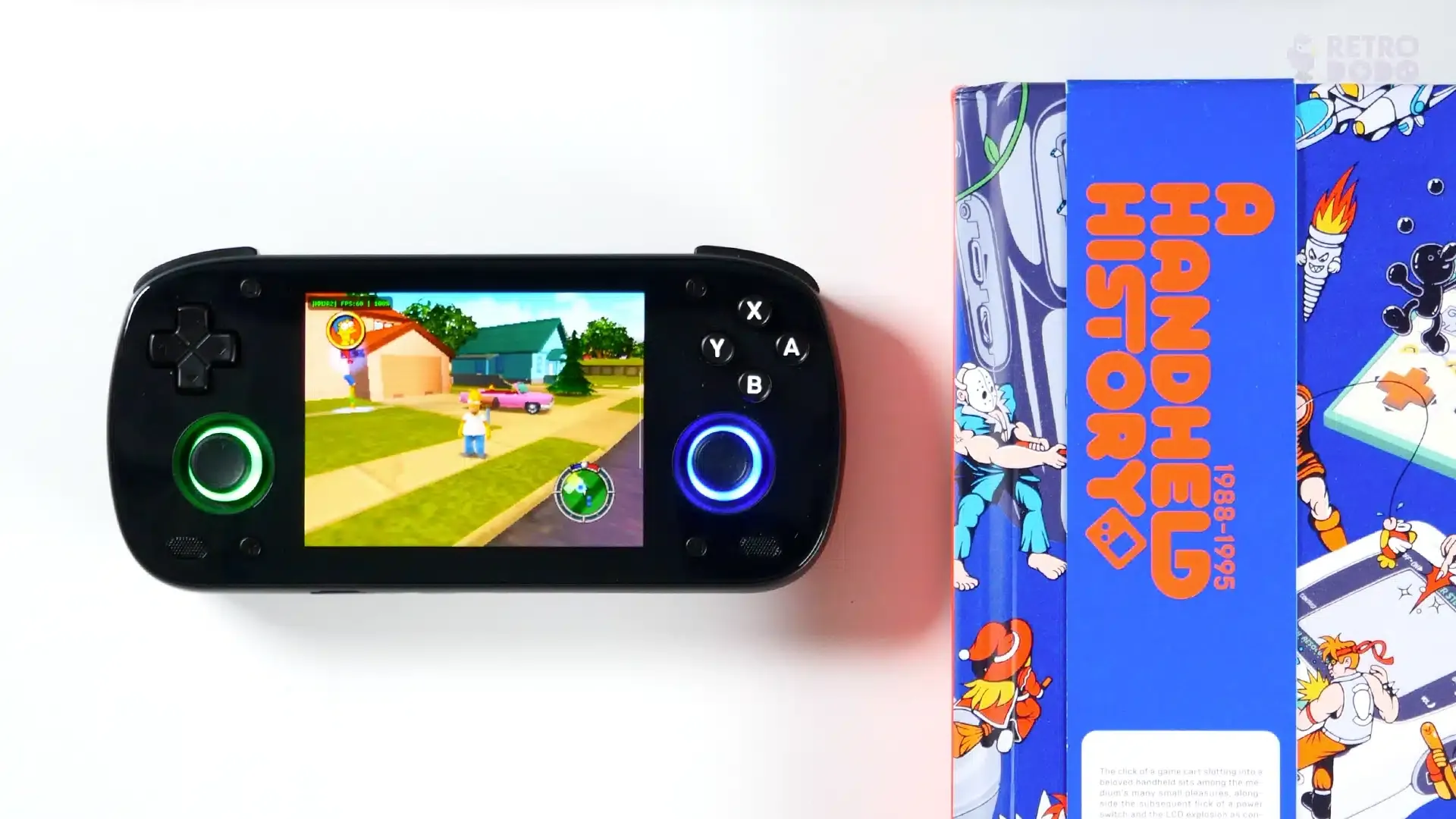
These are by far the best LED joysticks I have seen on a retro handheld, they’re high quality, click fell, are concaved and sit deep int the handheld keeping them away from snagging. I would have liked to have the ability to change the brightness of these, but it’s either on or off, so I found myself turning them off most of the time. There’s also no animation on them, which other handhelds do have, should you miss the rainbow affect, or reaction affect that lights up the direction you are pressing the stick.
The action buttons are also different, stick higher out of the device, feature different typography and are much more satisfying to press because they have deeper travel to them. This makes them feel better but with that comes a bit more noise which my partner has already complained about it in bed, and the buttons tend to slide down the shell so i actually see minor scuff marks on the site of the buttons, which isn’t an issue but is noticeable if you look closely.
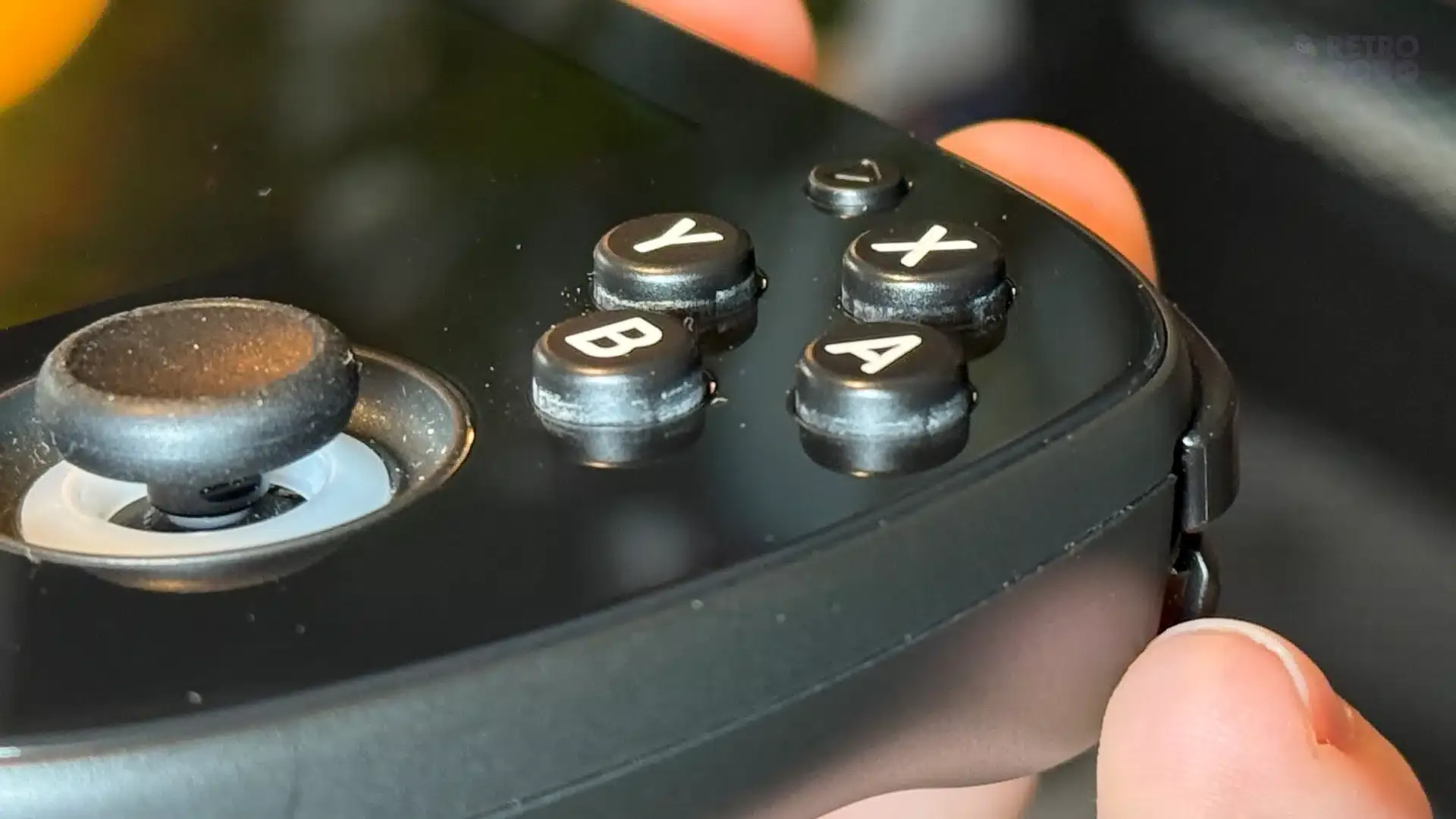
Around the face you’ll find four smaller buttons that are simply start, select, home and back. On my black device these are nicely hidden, the same goes for the front speaker grills, which are unfortunately located under my thumbs when playing, obscuring the sound slightly. The speakers themselves are very loud, the highest I set the volume to was 60%, and even that was too loud, you have to be crazy to pump this up to 100%… or partially deaf.
The shoulder buttons are fairly large, curved and stacked with decent travel to them, making them feel like they’ve been ripped from a Playstation 5 controller, they’re very high quality, and incredibly comfortable for long gaming sessions. Between them you’ll find a very small on/off button, and your volume buttons, with a large vent for air flow.
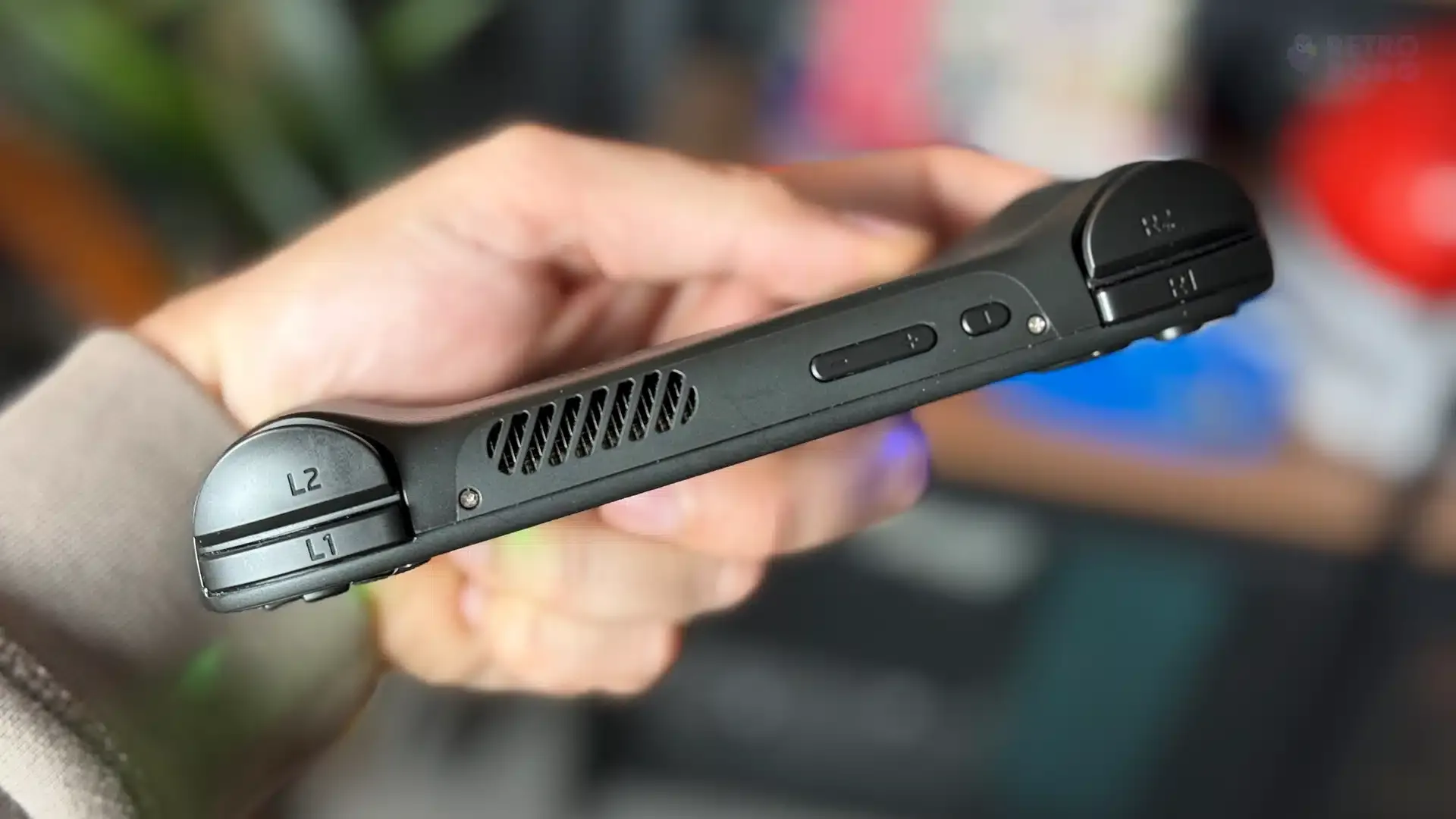
One negative I have that makes the device feel a little less premium, is the fact that you can see the obvious screws. These stick out like a sore thumb on my black device and I’m disappointed that they didn’t use black screws or even cover them some rubber. A sharpie will solve this issue but it’s not something I want or have to do on a $200 device. You can see more scews on the bottom too, alongside your SD card slot, a 3.5mm headphone hack and a USB-C port (which works with the Retroid Dock).
The device as a whole is pleasing on the eye, there’s no denying it and it’s a major jump from the Retroid Pocket 2S and the Retroid Pocket 4 Pro. It’s not as premium as the AYANEO Pocket Micro though, I have to mention. This has a plastic shell and no finger-print reader, something its competitors have for a similar price.
Adding a metal shell to this would have certainly been nice, and made customers who splash $200 feel like it is truly as premium as it can be, but GoRetroid decided against it. It’s no biggy, but understanding that competitors are going that extra mile is my duty as a reviewer to bring up.
Comfortability & Portability
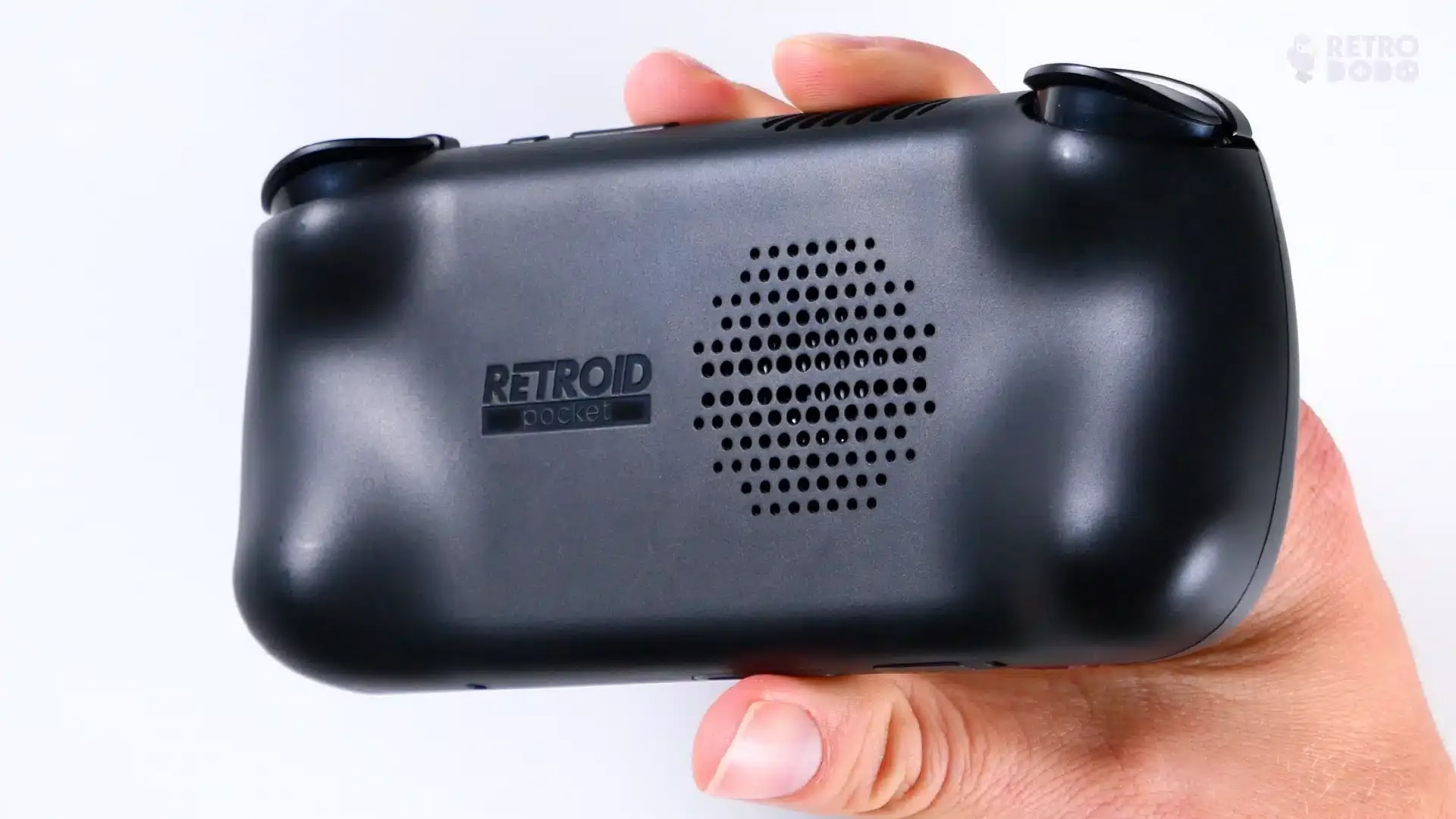
This is by far, one of the most comfortable pocket-friendly retro handhelds that I have reviewed. GoRetroid has absolutely nailed the ergonomics and button placements on this one, mainly thanks to the grips on the back shell that sits my fingers and hands perfectly.
When in hand I have an immense grip of the device and my thumbs sit directly on the DPAD and action buttons organically, without stretching, as if it has been designed for my hands only. It’s the first time GoRetroid has added grips to their devices, originally their devices have flat backs, which does look minimal but lacks comfort, so this is a much welcomed upgrade and gives the handheld more longevity, and space to add more tech.
However, with a bigger booty, it does mean that it will feel somewhat, lumpy in your pocket. Yes, this is pocketable and is the same size as my iPhone 16 Max Pro, but any bigger and I would have classed it as too big for normal pockets.
I would even go as far as saying that this isn’t actually “Mini” at all, if anything it’s a normal sized retro handheld. I class the Game Kiddy Pixel and the Funkey S and the Miyoo Mini as mini… not this.
Emulation Quality
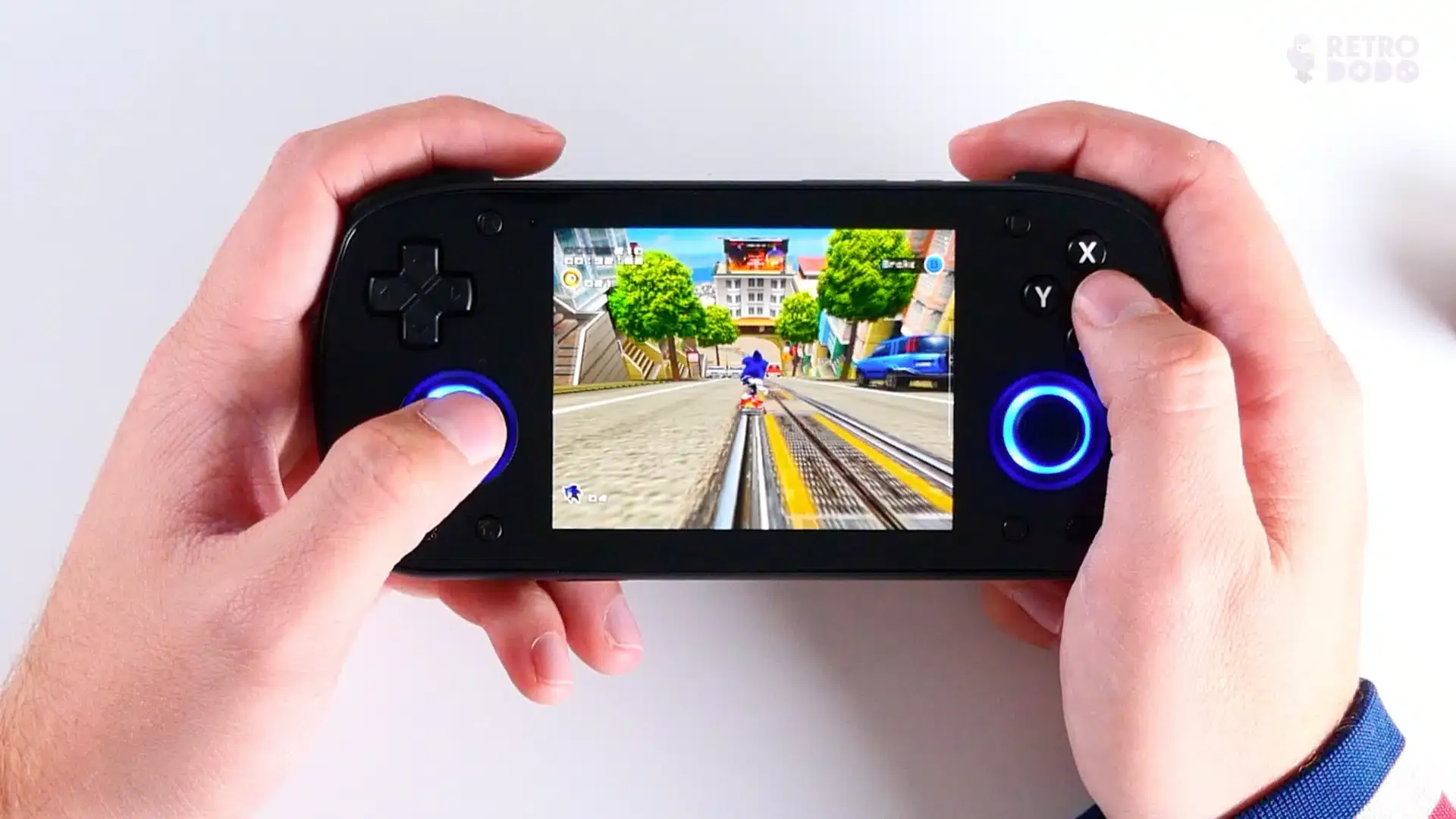
Packing a Snapdragon 865 CPU with 6GB’s of RAM and a decent GPU into a device that fits into your pocket still amazes me to this day. Handhelds are truly becoming little pocket rockets that can entertain retro gamers with most of their needs and the Retroid Pocket Mini does that, and well.
Because it runs on Android it opens up not only emulation opportunities but it gives you access to Android games, cloud streaming and more, should you want to do that. For me, this is designed specifically for retro games.
Yes, you can cloud stream and play Android games, but they’re designed for larger screens and I found myself not entertaining that area of this console at all. I found myself playing retro games only, with the “biggest” console being Gamecube emulation when I fancied it.
The specifications on this device can handle Gamecube games incredibly well and can easily state that it will play most of your Gamecube library with ease at silky smooth frame rates, there is the odd drop now and then on larger games such as Simpsons Hit & Run, but it’s still a great experience.
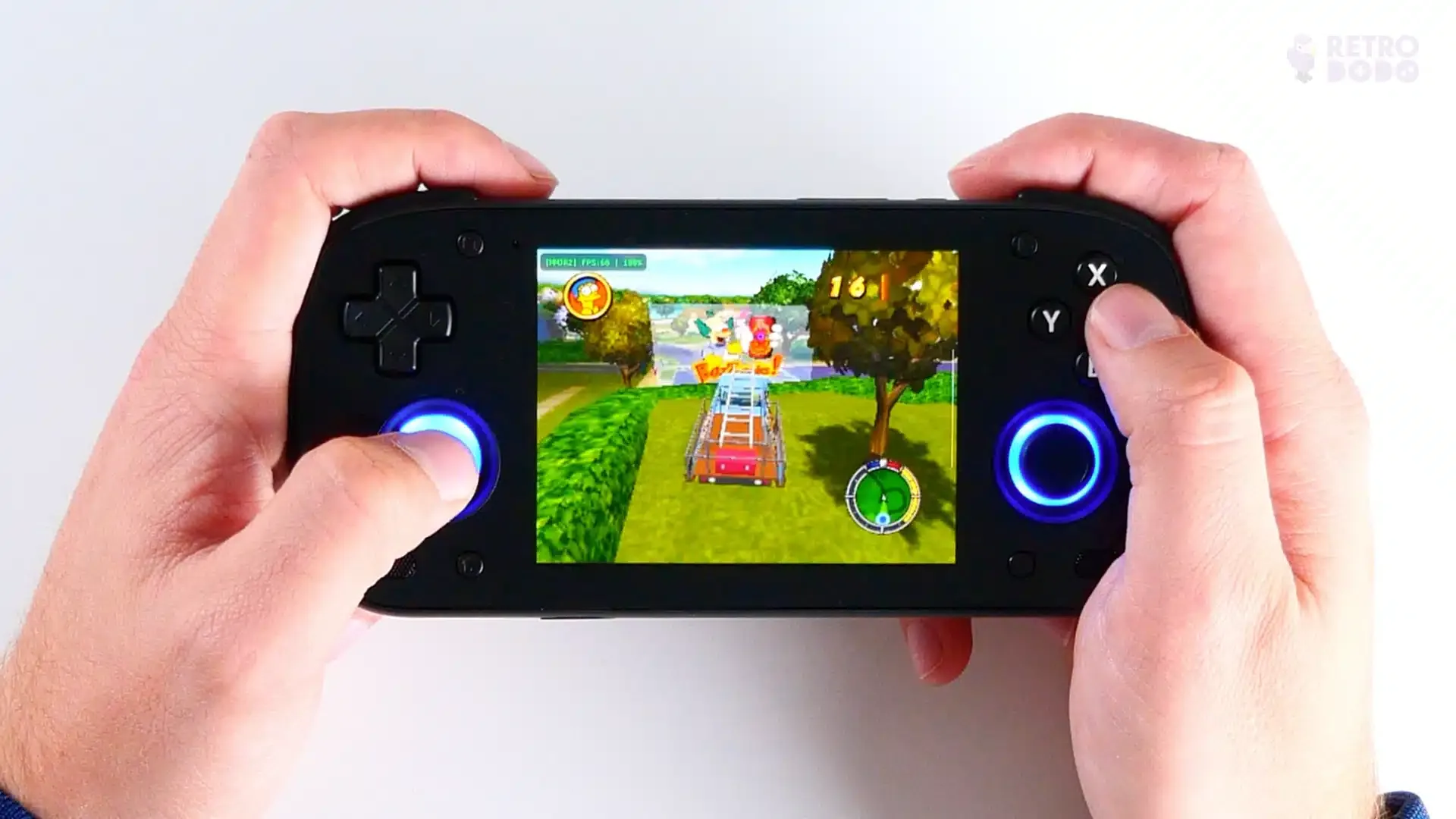
The same goes for Dreamcast, it crushes it and on this display and ergonomics I found myself playing these consoles for hours on end, draining the 5 hour battery life with ease on a recent holiday of mine. But the console I put most of my time into was actually Playstation 1, I felt as if the games, the upscaling at 4x and the ergonomics made playing Playstation 1 games on this premium build quality and absolute pleasure.
I know… $200 on a handheld that I play PS1 games on the most is ridiculous, but it was an organic pull that I didn’t see coming, and the games look outstanding. Game Boy, SEGA Mega Drive, Nintendo 64, Game Boy Advance, NES and SNES work well on here, as they should because they require very little power.
PSP can be emulated on here fluidly, but the 3.7″ 4:3 display makes it look cramped, especially considering it has borders that turn it into a 3″ display. For that reason alone I barely touched PSP emulation.
For those seeking Playstation 2 emulation you might be in luck because most Playstation 2 games can be emulated on here with great performance thanks to the almighty specifications. But like most handhelds I review, not every game works. If you start loading up the larger PS2 games on here like God of War or Need For Speed: Most Wanted you will notice frequent frame rate drops and you’ll quickly meet the handhelds limits.
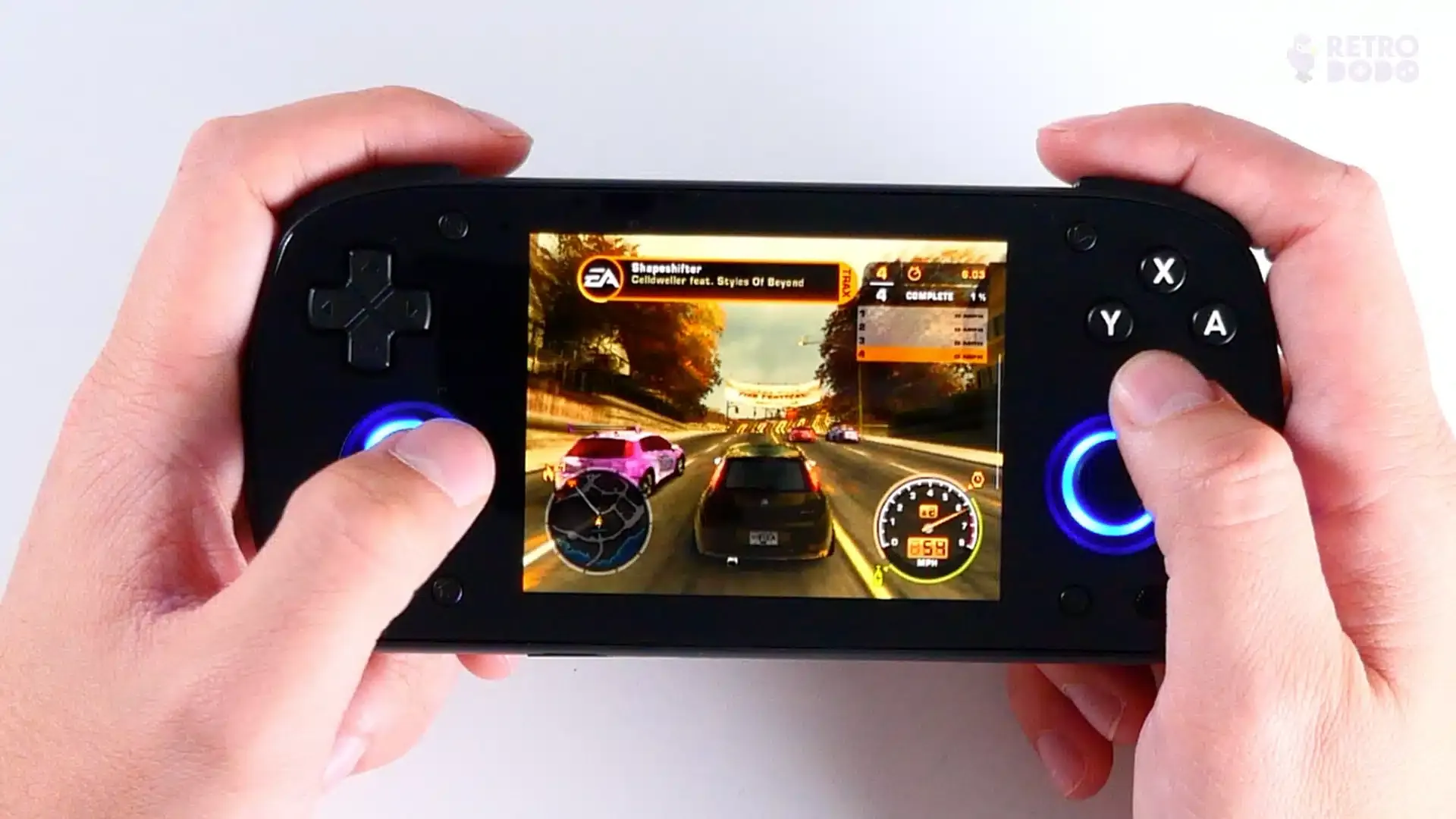
Which is somewhat surprising as GoRetroid stated on their social media before the launch that this can emulate Playstation 2 games. They’re not wrong, but this can be seen as misleading for those that have certain games they want to play that may hit its limit. So, as a reviewer that wants to give you the best advice, I would not recommend buying this if you are seeking PS2 emulation on a 3.7″ display as a very small selection of your library not might run flawlessly.
You will hit minor hiccups like I did, even after tinkering in the settings to try and squeeze a few extra frames out of it. We’re at this moment in time where manufacturers just can’t figure out how to emulate Playstation 2 games on a sub $200 device. I am waiting for the Retroid Pocket 5 to see if the 2GB’s of extra RAM will help with the higher end PS2 emulation, but only time will tell. Admittedly this is over the $200 price mark too.
With that emulation performance in mind, and the fact that PS2 games, and even Gamecube games for that matter look and feel cramped on a 3.7″ display I can’t help but think that I don’t actually need this ammount of power for a handheld that I rarely push to its limits.
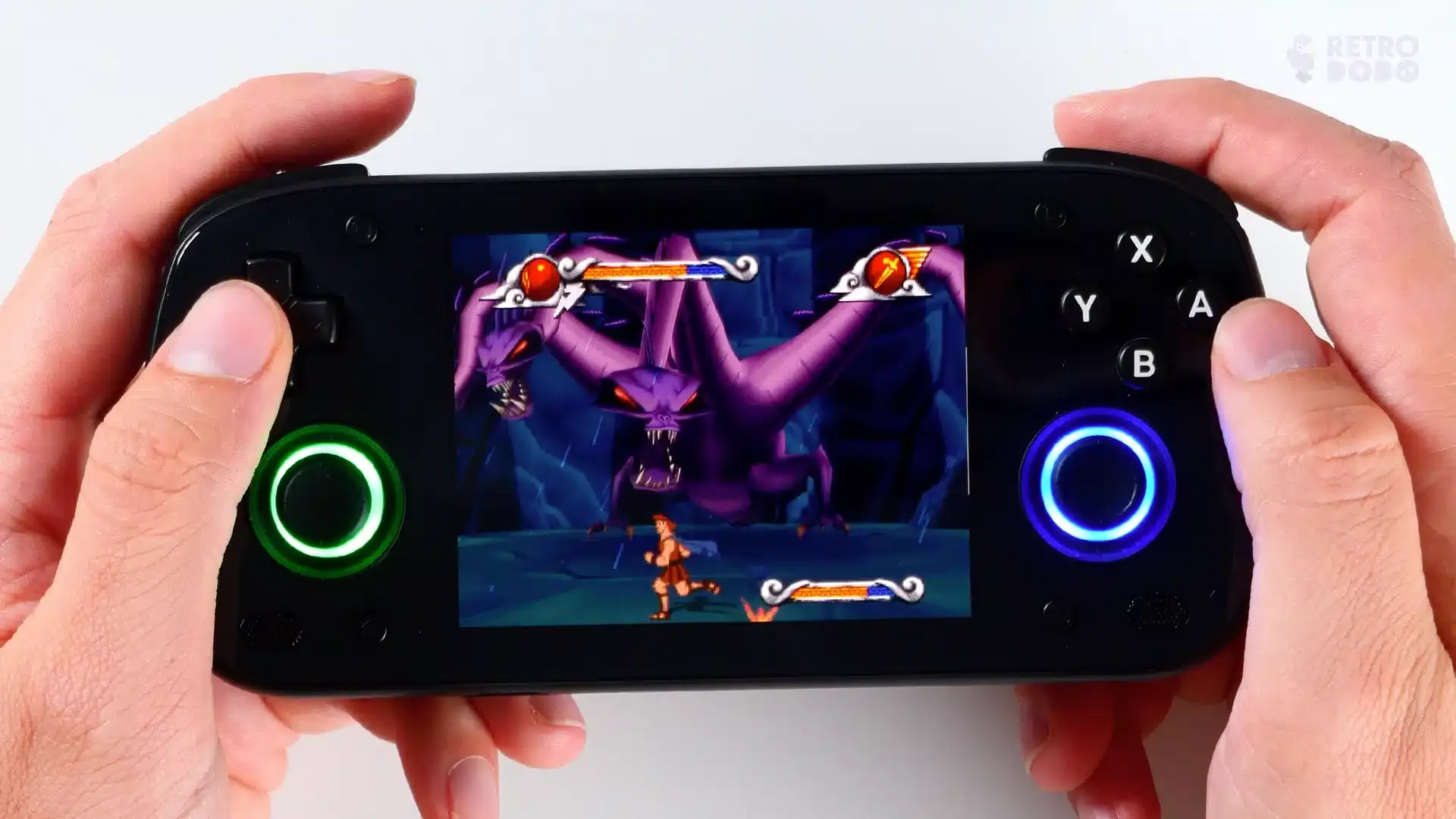
I know some of you reading will happily disagree, as superb Gamecube emulation on a 3.7″ pocket-friendly device sounds great (because it is), and that is a personal preference but for my 32 year old eyes, and poor posture I didn’t gravitate towards those consoles as often I hoped.
Playstation 1, Dreamcast and a very small dash of Gamecube emulation was where I found myself exploring the most, and for that I could find $99 – $149 devices that can do that. Those are devices I already own, meaning I wouldn’t want to upgrade or pay an extra $199 to get a device that I’m doing the same kind of emulation on, with some better build quality.
Don’t get me wrong, if you want Gamecube emulation and a sprinkling of PS2 on a form-factor like this, then it’s a great product that you’ll certainly love, I just personally need a bigger screen.
Overall Opinion

- Premium Build Quality
- Bright, AMOLED, Border-less Display
- Incredibly Comfortable
- LED Hall-joysticks & Analogue Shoulder Buttons
- Too Much Power For A 3.7″ Display
- Awkwardly Placed On The Market
- Visible Screws
- Not So “Mini” – Just About Pocketable
The Retroid Pocket Mini has some much welcomed physical upgrades that puts this and its price into the “premium” category of retro handhelds, and because it’s packed with power it can certainly handle most retro consoles that its customers will likely want to emulate, but that said a small selection of PS2 games are still out of reach for this device, capping its limit at Gamecube emulation which older and cheaper devices can still do, albeit not this comfortably.
With that in mind I wish they priced this lower at $119 or $149 with less impressive specifications but kept the beautiful physical upgrades and natural ergonomics capped at Dreamcast/PS1/N64 emulation.
This would entice Retroid Pocket 2S owners to upgrade, and it would also stop customers from waiting a few weeks for the Retroid Pocket 5 which will undoubtedly be a more comfortable experience for Gamecube, PSP and Playstation 2 emulation thanks to the larger screen and extra RAM.
This is why I stated at the start of the review that it’s placed awkwardly on the market. Perhaps it’s because last time GoRetroid got ridiculed by the community for releasing other more powerful handhelds shortly after release, something many manufacturers in the space continue to do? So maybe they felt obliged to launch them at the same time, but you get so much more going for the Retroid Pocket 5 for just $20 extra.
It annoys me that I have to write this because this device is so well designed, and it’s an incredible retro handheld that GoRetroid should be incredibly proud of, and if you want a seriously powerful, comfortable 3.7″ device then buying this will not be a disappointment, however I just believe they would have had a lot more success, lowering the specs and lowering the price.
I don’t need Gamecube and Playstation 2 emulation on a small well-built, comfortable, plastic device for $200. I want flawless Dreamcast, Playstation 1, Nintendo 64 and Nintendo DS emulation on small well-built, comfortable device for $120, so that i have to buy nothing else in that space for a very long time. I can then focus on the larger emulation a AAA gaming on a more expensive all-round handheld gaming PC with the extra cash.
The Retroid Pocket Mini is available to order from GoRetroid for $199 before shipping.


